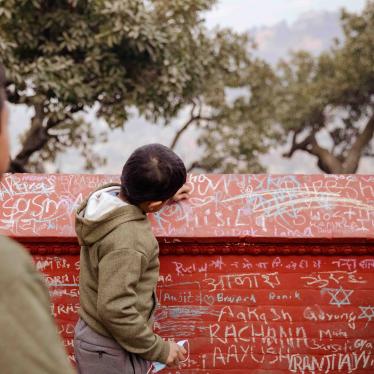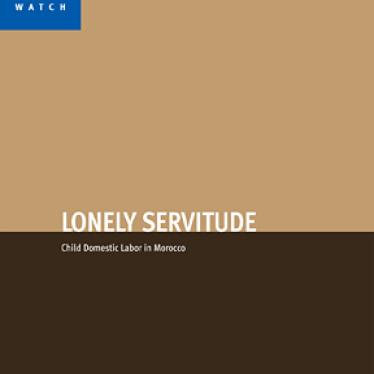There are four kinds of international law in relation to child soldiers: international human rights law, international humanitarian law, international criminal law and international labour law.
Definitions
"Recruitment" (1) covers any means (formal or de facto) by which a person becomes a member of the armed forces or of an armed group, so it includes conscription (compulsory/obligatory military service), voluntary enlistment, and forced recruitment.
The understanding of the meaning of "participation in hostilities" was explained in relation to the provisions in the Rome Statute of the International Criminal Court as:
- "The words "using" and "participate" Е cover both direct participation in combat and also active participation in military activities linked to combat such as scouting, spying, sabotage and the use of children as decoys, couriers or at military checkpoints. It would not cover activities clearly unrelated to the hostilities such as food deliveries to an airbase or the use of domestic staff in an officer's married accommodation. However, use of children in a direct support function such as acting as bearers to take supplies to the front line, or activities at the front line itself, would be included within the terminology." (2)
Relevant Standards
1977 Additional Protocols to the four Geneva Conventions and the Convention on the Rights of the Child (1989): Both use a 15-year minimum age for recruitment and participation in hostilities. Article 38 of the Convention is derived from Article 77(2) of Additional Protocol I of 1977 to the four Geneva Conventions of 1949. It states:
1. States Parties undertake to respect and to ensure respect for rules of international humanitarian law applicable to them in armed conflicts which are relevant to the child.
2. States Parties shall take all feasible measures to ensure that persons who have not attained the age of 15 years do not take a direct part in hostilities.
3. States Parties shall refrain from recruiting any person who has not attained the age of 15 years into their armed forces. In recruiting among those persons who have attained the age of 15 years but who have not attained the age of 18 years, States Parties shall endeavour to give priority to those who are oldest.
Additional Protocol II (applicable in non-international armed conflicts) is similar. Article 4(3)(c) states:
"children who have not attained the age of 15 years shall neither be recruited in the armed forces or groups nor allowed to take part in hostilities."
The Convention's Article 38 is an anomaly in using a 15-year age minimum; in all other respects, the Convention's general definition of a child is any person under the age of 18 (unless under the law applicable to the child, majority it attained earlier). (Article 1)
The Convention applies to all children in all circumstances, with the exceptions only of the United States and Somalia - the two countries not yet parties to it.
The African Charter on the Rights and Welfare of the Child is the only regional treaty in the world which addresses the issue of child soldiers. It was adopted by the Organisation of African Unity (OAU) in 1990 and came into force in November 1999. It is clear and specific, that a "child" is anyone below 18 years of age without exception. (3) It goes on to state:
"States parties to the present Charter shall take all necessary measures to ensure that no child shall take a direct part in hostilities and refrain in particular, from recruiting any child." (4)
The Rome Statute of the International Criminal Court (1998) gives the court jurisdiction over the war crime of conscription or enlisting children under 15 years into national armed forces or armed groups, or using them to participate actively in hostilities. (Article 8) Although the Statute uses the terminology of "conscription" or "enlistment" of under-15s, this is accepted as meaning the same as "recruitment" in the other treaties.
ILO Worst Forms of Child Labour Convention 182 was adopted on 17 June 1999 and came into force on 19 November 2000. It commits each state which ratifies it to "take immediate and effective measures to secure the prohibition and elimination of the worst forms of child labour as a matter of urgency". (5) The term "child" applies to all persons under the age of 18 years (6) and the worst forms of child labour include:
"all forms of slavery or practices similar to slavery, such as the sale and trafficking of children, debt bondage and serfdom and forced or compulsory labour, including forced or compulsory recruitment of children for use in armed conflict". (7)
Recommendation 190 accompanying Convention 182 encourages states to make such recruitment a criminal offence. This was the first time that an 18-year minimum age limit was set in relation to child soldiering in an international treaty. It was also the first specific, legal recognition of child soldiering as a form of child labour.
The ILO Convention also prohibits "work which, by its nature or the circumstances in which it is carried out, is likely to harm the health, safety or morals of children" (8) but leaves it to the national authorities to determine, after consultation with associations of workers and employers, what should be included under this prohibition. States could include all participation in hostilities and all military recruitment of under-18s in this category.
The Optional Protocol to the Convention on the Rights of the Child on the Involvement of Children in Armed Conflict was adopted by the UN General Assembly on 25 May 2000. Its main provisions:
Article 1:
State Parties shall take all feasible measures to ensure that members of their armed forces who have not attained the age of 18 years do not take a direct part in hostilities.
Article 2:
State Parties shall ensure that persons who have not attained the age of 18 years are not compulsorily recruited into their armed forces.
Article 3:
1. States Parties shall raise the minimum age in years for the voluntary recruitment of persons into their national armed forces from that set out in Article 38(3) the Convention on the Rights of the Child, taking account of the principles contained in that article and recognize that under the Convention persons under 18 are entitled to special protection.
2. Each State Party shall deposit a binding declaration upon ratification of or accession to this Protocol which sets forth the minimum age at which it will permit voluntary recruitment into its national armed forces and a description of the safeguards that it has adopted to ensure that such recruitment is not forced or coerced.
3. States Parties which permit voluntary recruitment into their national armed forces under the age of 18 shall maintain safeguards to ensure, as a minimum, that:
Article 4
1. Armed groups, distinct from the armed forces of a State, should not, under any circumstances, recruit or use in hostilities persons under the age of 18 years.
2. State Parties shall take all feasible measures to prevent such recruitment and use, including the adoption of legal measures necessary to prohibit and criminalize such practices.
3. The application of the present article under this Protocol shall not affect the legal status of any party to an armed conflict.
-
- such recruitment is genuinely voluntary;
- such recruitment is done with the informed consent of the person's parents or legal guardians;
- such persons are fully informed of the duties involved in such military service, and
- such persons provide reliable proof of age prior to acceptance into national military service.
On becoming parties to the Protocol, States have to deposit a binding declaration setting out their minimum voluntary recruitment age and the safeguards they have adopted in compliance with Article 3 (3). These declarations may be strengthened at any time, but not weakened. (9) In other words, a declaration can only be withdrawn in favour of a declaration specifying a higher minimum voluntary recruitment age into the government armed forces, and not a lower one.
In relation to armed groups, it is important to note that in the Optional Protocol there is no requirement that such groups are involved in an armed conflict. This means that questions about whether or not a situation amounts to an armed conflict are irrelevant, and that recruitment prior to the start of a conflict is also covered. Furthermore, there is an obligation on all states parties to the Protocol to take all feasible measures to prevent recruitment and use of under-18s by armed groups - not only the state directly confronting the group - including legal measures to prohibit and to criminalize such practices.
1. See Junod, in Commentary on the Additional Protocols, Article 4, No. 4557, p 1380
2. UN Document A/CONF.183/2/Add.1
3. Article 2
4. Article 22(2)
5. Article 1
6. Article 2
7. Article 3(a)
8. Article 3(d)
9. Article 3







